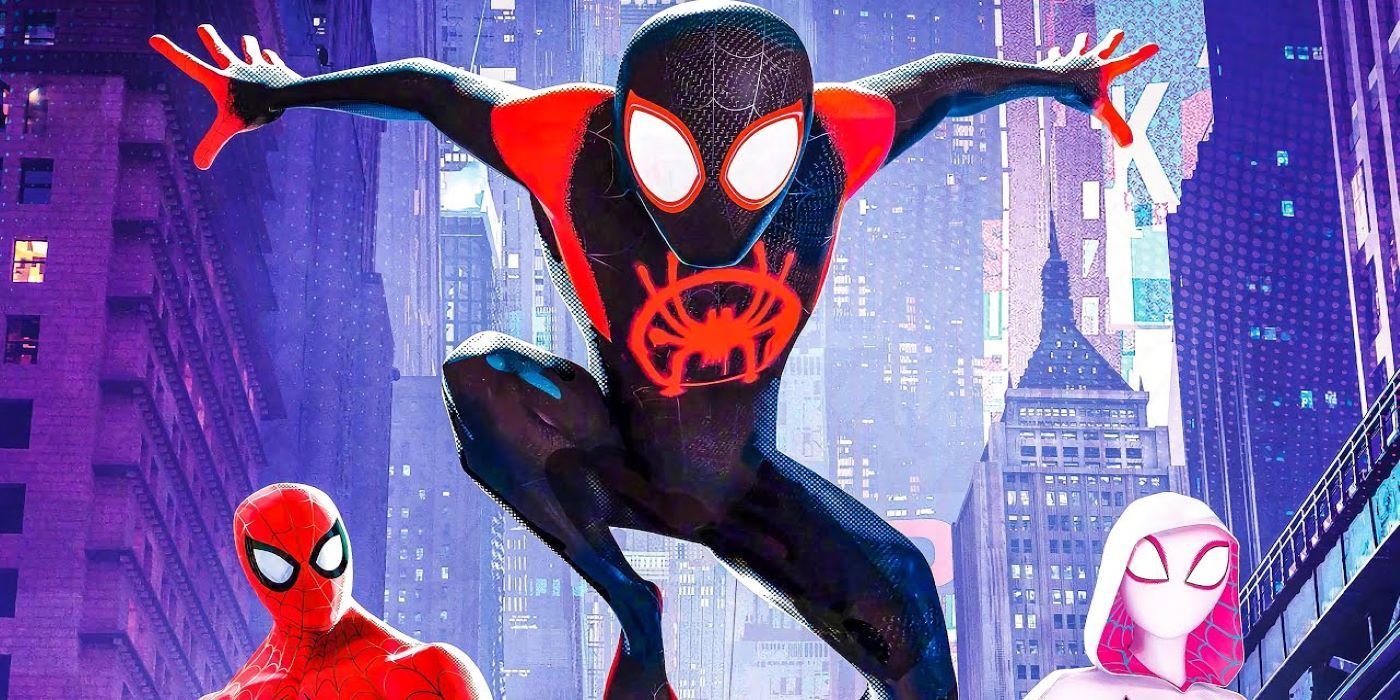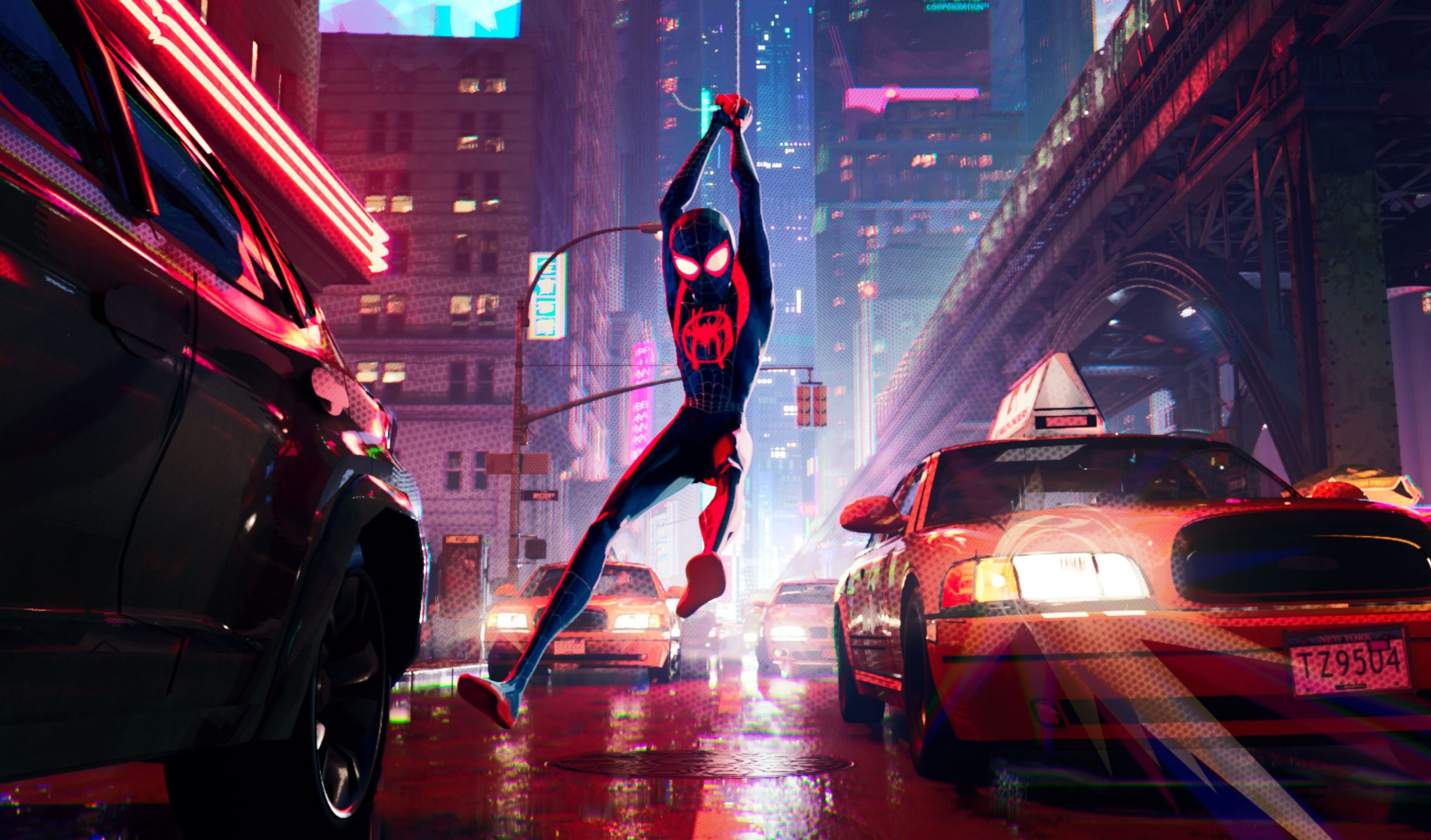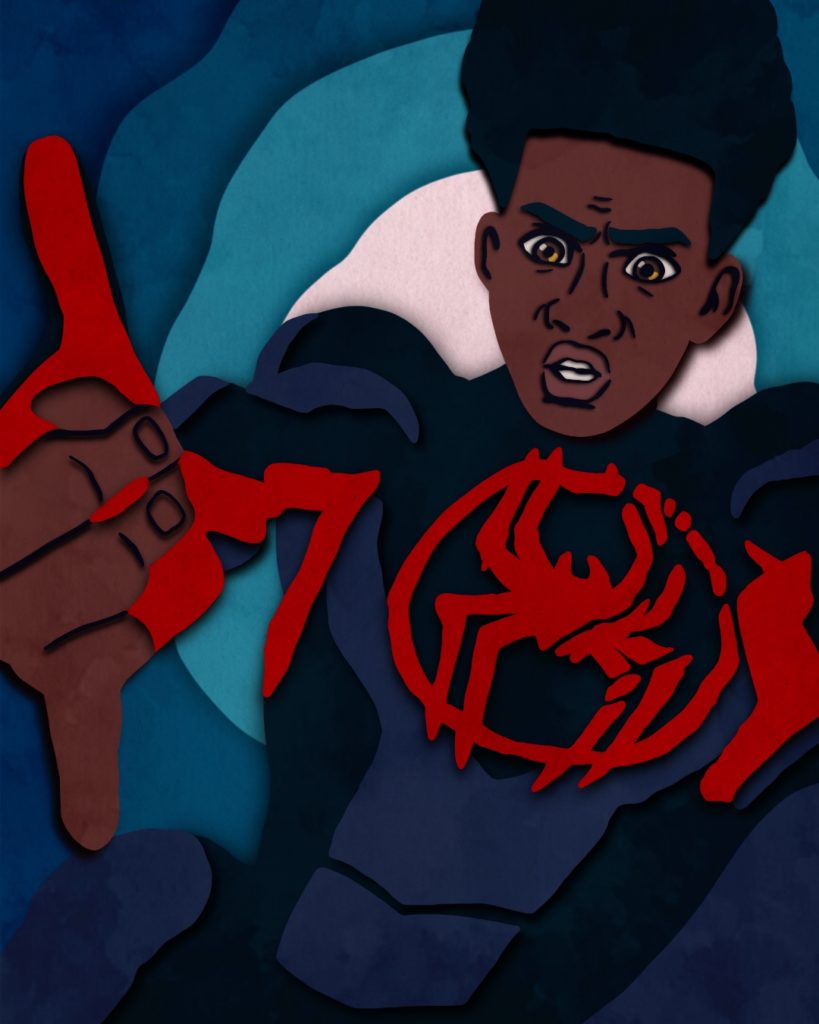TITLE CLARIFICATION: Miles Morales is the first Black and Hispanic Spider-man to be in a Spider-Man film. Miguel O’Hara is of Irish and Mexican descent.
Illustration by team illustrator Sakura Siegel.
Picture bodegas, blasting hip-hop music, and pick-up basketball games on a roughed up outdoor court. That’s the first few scenes that re-introduces Miles Morales from his hometown of Brooklyn, New York – a side that’s never been shown in any other Spider-Man movie trilogies.
This Spider-Man story is different.
“Spider-Man: Across The Spider-Verse” released on June 2, and opened to $120 million in the US, for a worldwide total of $225.4 million thus far.
While there was little doubt “Across the SpiderVerse” would be a success, the sequel may have exceeded expectations once again, with some claiming the latest iteration to not only be the best Spider-Man movie of all-time, but perhaps the greatest comic-book movie of all-time.
Looking back, it may be hard to believe that there is a universe where the first movie, “Into The Spider-Verse” is a failure, but that was very much a possibility in December 2018. “Spider-Man: Into the Spider-Verse” would become a transcending movie because of the introduction of new characters to a larger audience and its trippy, experimental, but captivating animation.
The groundbreaking film won the 2019 Oscar for “Best Animated Film,” which is typically an award that is usually dominated by Disney/Pixar.
Expanding The Spider-Verse
For many people, when they think of Spider-Man/Peter Parker they may think of Tobey Maguire, Andrew Garfield or Tom Holland. And while each of them provide a different take to Spider-Man with varying success, they all are White, with Garfield and Holland hailing from the United Kingdom.
Enter Miles Morales, who is voiced by Shameik Moore, who has an African-American father and a Puerto-Rican mother, and became the first biracial Spider-Man to appear in cinemas. Gwen Stacy in many forms of media, is shown to die, in a gruesome way; in 2014’s “Amazing Spider-Man 2,” Gwen Stacy, played by Emma Stone, dies by a whiplash effect of falling from a clock tower and the sudden stop from Spider-Man’s webbing catching her.
“Into the Spider-verse” Gwen Stacy is seen in a different light, as narrated by her via her recap within the movie. Gwen, voiced by Hailee Steinfeld, is the only Spider-Person in her universe, where it is Peter Parker who dies, not Gwen. Gwen, aka Spider-Gwen, has all the powers you would expect Spider-Man to have, becoming the first female Spider-Person.
The animation of “Into the Spider-Verse” along with its unique storytelling, combine to create such a different, memorable classic.

A reason for the success of this film may have been because Sony Pictures was focused on other projects, and did not prioritize “Into the Spider-Verse. This allowed the directors the creative freedom to show off their arts without interference from others.
It seems like many shows and movies currently have plots centered around the multiverse, but this was not always the case.
Back in 2018, while other shows and movies may have covered multiverses, “Into the Spider-Verse” was unique enough to differentiate itself from similar stories.
The other Spider-People, such Spider-Ham, Spider-Noir, and Peni Parker, have their own unique animation from their respective universes that appear when they are misplaced on Miles’ Earth. Nostalgia and excitement were at an all-time high when Tom Holland, Tobey Maguire, and Andrew Garfield all teamed up as Spider-Man in 2021’s “Spider-Man: No Way Home.”
This would not be the first Spider-Person team-up on screen though, as 2018’s “Into the Spider-Verse” had the first Spider-Men team-up – just animated.
The Incorporation Of Urban Influence
The songs within the movie, as well as the official soundtrack, make this Spider-Man film feel different than its predecessors. While licensed music has been used in the Spider-Man franchise previously, there’s a different feel when Miles’ Uncle Aaron – this would be Peter Parker’s Uncle Ben equivalent – plays a record that plays the Notorious B.I.G’s hit song “Hypnotize” in his Brooklyn apartment.
As for the soundtrack, “Sunflower” by Post Malone and Swae Lee was the most successful song, going 18x Platinum.
Miles’ clothing, specifically his Air Jordan 1s are featured prominently in “Into the Spider-Verse.” As a result the Air Jordan 1 “Spider-Man Origin Story” originally retailed for $160 in December 2018, currently can resale for $735, in a size 10.

From the inclusion of a new character like Miles Morales, to the reimagining of Gwen Stacy as a Spider-Person, instead of a casualty, to the art style of the movie, “Spider-Man: Into the Spider-verse” has evidently impacted the culture in numerous ways.
The success of “Into the Spider-Verse,” to now having Sony Pictures full financial backing has paved the way for the monumental success of “Across the Spider-Verse” thus far. Idolized producer Metro Boomin produced the soundtrack for “Across the Spider-Verse” and is currently the biggest rap streaming debut of 2023, as well as the second biggest soundtrack debut ever.
“Spider-Man: Across the Spider-Verse” is in theaters now, while a third film, “Spider-Man: Beyond the Spider-Verse” is currently slated for a March 2024 release date.













